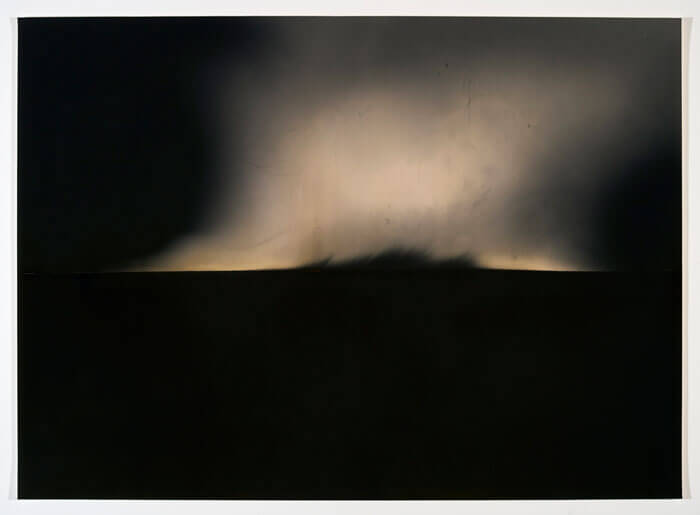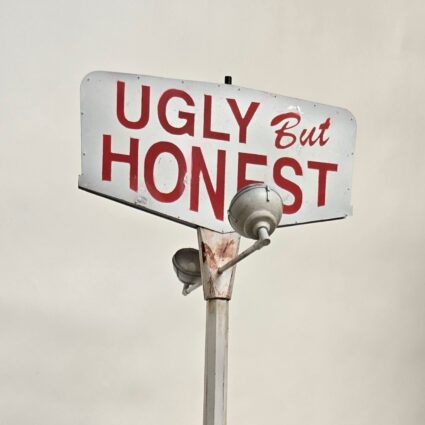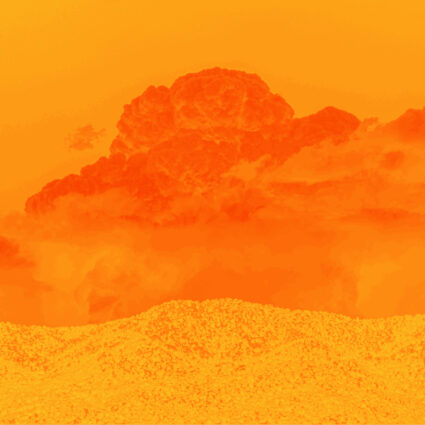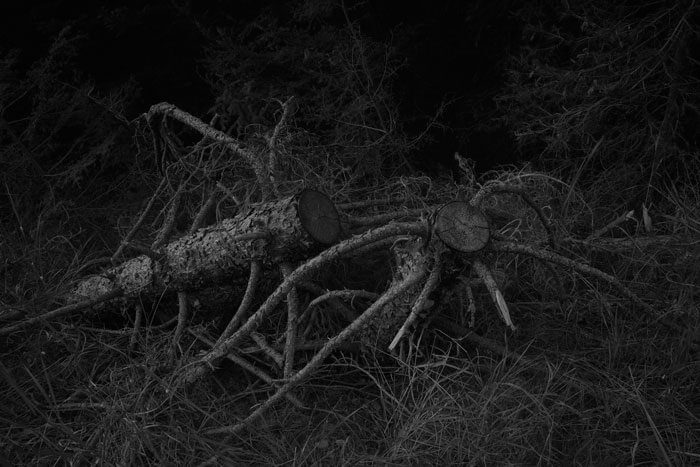
New Mexico Museum of Art, Santa Fe
December 15, 2018 – March 31, 2019
Shots in the Dark is an exploration of the ambiguous space that takes shape in darkness. The thirty-two photographs spanning the gallery were all made at night by four Southwest-based photographers: Chris Colville, scott b. davis, Ken Rosenthal, and Mike Lundgren. These photographers bend the traditional objectivity of landscape photography to bring themselves and their audience closer to the ineffable. Darkness, in these works, serves as a portal to discovering and showcasing new terrain, both internal and external. The visual diversity and the means by which each image was captured result in a strong conversation about environment and perception: each work delicately exposes the gaps inherent in our perceptual processes, defining them by darkness.
The selected urban landscapes from scott b. davis’s Nocturnes (1997-2009) and Land of Sunshine (2004-2012) fill the first bay of the gallery. davis uses a hand-built sixteen-by-twenty-inch camera and an eight-by-ten-inch view camera. The set-up typical of view cameras, combined with the long exposure time needed to make photographs in the dark, guarantees a slow process and meditative time spent with his chosen landscapes. By hand layering his platinum-palladium prints, davis creates a visual space where the print replicates what our eyes do in the dark: extracting a range of subtle tones as we adjust to limited light.
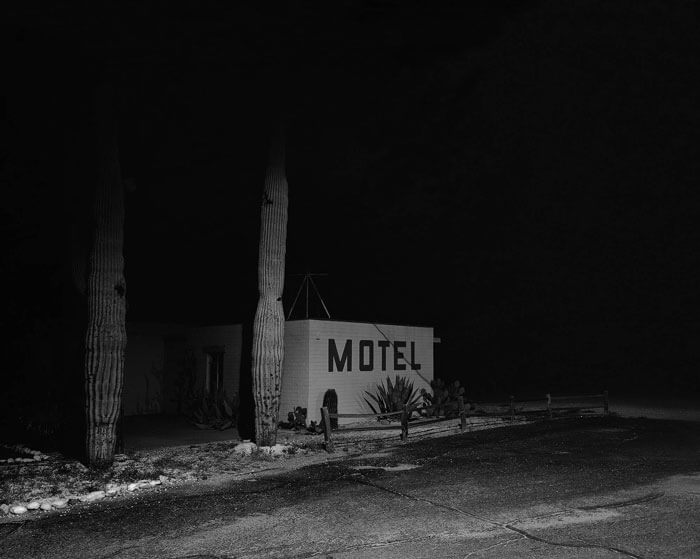
Selected works from Ken Rosenthal’s series The Forest (2011-2016) were taken in the wilderness of the Selkirk Mountains in northeast Washington. Rosenthal chooses densely wooded landscapes at night to act as mirror and metaphor for internal psychological states. Rosenthal’s familiarity with the Selkirk woods dates back to childhood. Exploring the woods at night gave Rosenthal a new experience, one that simultaneously revealed untapped environments within himself.
While Rosenthal uses darkness as a medium to elicit sleeping internal environments, Mike Lundgren’s selected works from the series Matter (2006-2014) and Transfigurations (2000-2006) use darkness as a means to abstract and subvert natural landscapes in a way that renders the subject matter anew. Using non-directional light or in-camera flash and long exposure time, Lundgren transmutes his subject matter, distilling and simplifying natural forms to the point that they are both recognizable and not. Nova, one of the few color photographs in the show, focuses our eye on an almost iridescent, otherworldly orange orb in the field of receding darkness. Only careful study and a knowledge of desert flora reveal a species of yucca that has been altered by fire and the camera lens. Lundgren’s images are transformative: as visual cues are reduced, we are brought closer to the meaning and experience of the subject at hand.
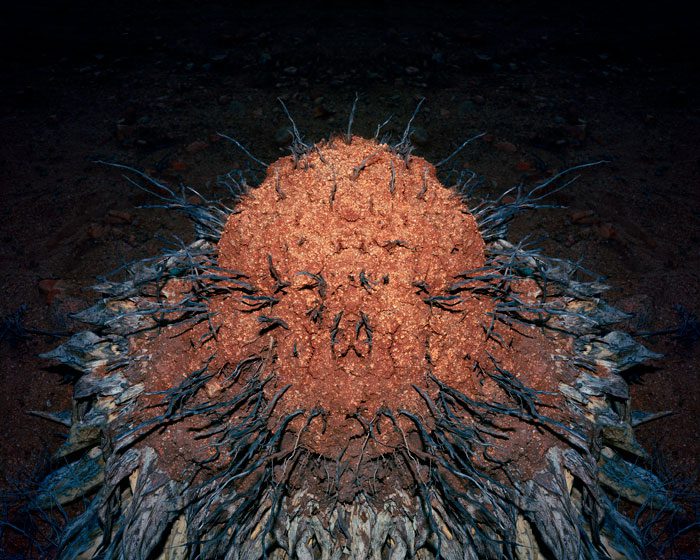
Selected works from Chris Colville’s series Dark Hours Horizon (2015-2017) and Works on Fire (2013-2015) are by far the most abstract of the photographs featured. Made without a camera, Colville’s creations are rendered by small controlled gunpowder explosions directly on silver-gelatin paper. The explosions make for quick light exposures, which Colville mediates using natural material like sand and rocks to erode and abrade the surface of the print. The result is a complex texture and a uniquely referential field of dark, light, and color. By manipulating the contrast between light and dark with his own hand, Colville creates images never before seen, but ones that nonetheless effectively recall experiences of landscape and nature at night.
Shots in the Dark challenges what we perceive about darkness with highly adaptable photographs: the closer we look, the more is revealed as we let go of what we assume darkness is and can be. In choosing to share the space that darkness creates, these works and their creators take us out of our visual comfort zone and the world of light. Each work poses an individual question to the canon of landscape photography and asks us to do the same as we encounter images of our world in a dissimilar context. Considering the form and insight darkness can bring to our lives creates a template for a greater understanding of what exists around us all the time, beyond what we are accustomed to noticing. The practice that these photos share is the gift of greater sight and flexibility of perspective.
